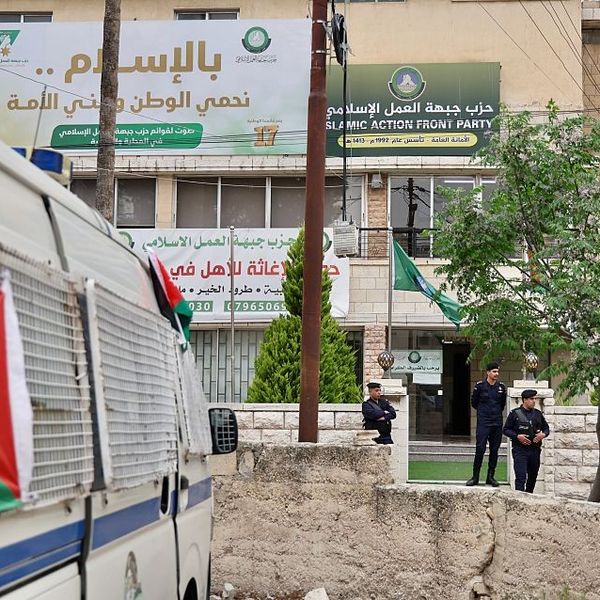Bottom Line Up Front
- Following the recent death of Abu Bakr al-Baghdadi, the so-called Islamic State announced its new leader, Abu Ibrahim al-Hashemi al-Qurayshi.
- The selection of al-Qurayshi is intended to ensure continuity, signaling that the new leader will carry on the legacy of the caliphate.
- One of the biggest questions for the future of the group will be how its affiliates and franchise organizations respond to the new leader.
- With the ascension of al-Qurayshi, the United States and its allies are facing an intelligence gap, not knowing what to expect from the Islamic State’s new leader.
Following the death of its leader Abu Bakr al-Baghdadi at the hands of a United States Special Operations Forces raid on his hideout in Syria’s Idlib province, the so-called Islamic State announced its new leader, Abu Ibrahim al-Hashemi al-Qurayshi. The Islamic State’s announcement referred to al-Qurayshi as ‘emir of the believers’ and ‘caliph,’ while highlighting his alleged direct lineage to the Prophet Muhammad, the detail most critical for determining eligibility as next caliph. Little is known about al-Qurayshi, which is not a real name but rather a nom de guerre, so the true identity of the Islamic State’s current leader remains shrouded in mystery. Many terrorism analysts are wondering whether he is an Iraqi or a foreign national, with most speculating the former. The Islamic State also announced a new spokesman, Abu Hamza al-Qurayshi, following the killing of its former spokesman Abu Hassan al-Muhajir, killed one day after Baghdadi, at a location in northern Syria.
While it will be important to glean as much information as possible about who this individual is, there are other important factors to consider as well. The selection of al-Qurayshi seems to be a ‘safe pick’ because it is an attempt to ensure continuity for the group, signaling to Islamic State supporters that the new leader will carry on the legacy of the caliphate. While some see this as unremarkable, it is noteworthy because it demonstrates that while the world is ready to pronounce the Islamic State dead and finished, the group's core leadership continues to believe it can operate much as it has in the past. The suggestion is that nothing changes, allegiance should still be to the leadership, and affiliates and franchises should continue to look to al-Qurayshi for guidance on how to operate. In other words, this selection of the new leader is a way for the Islamic State to link its past with the future it will promise its adherents and followers. The death of Baghdadi will not be the death of the Islamic State, which at its peak, attracted 40,000 foreign fighters from 110 different countries. The affiliates will continue to function and many have already begun pledging loyalty to the group’s new leader. However, Baghdadi’s death will do significant damage to the image of the Islamic State.
Even though the Islamic State moved swiftly to name a replacement, al-Qurayshi is a relative unknown, which raises questions about whether he can be trusted or inspirational enough to lead the Islamic State into its next phase. As witnessed following the death of Osama bin Laden, al-Qaeda’s command-and-control network was negatively impacted, with the leadership of certain affiliates less willing to follow the lead of the group’s new emir, bin Laden’s longtime deputy Ayman al-Zawahiri. But unlike the Islamic State, al-Qaeda enjoyed the benefit of a ‘deep bench’ and some of its leading members remain involved in the group today. The situation with the Islamic State is different, and there are growing doubts that al-Qurayshi will be able to adequately fill the leadership vacuum. The result could be al-Qaeda moving to poach existing Islamic State members, further attenuating the group during a challenging transition.
In its acknowledgment of Baghdadi’s death, the Islamic State’s announcement also issued new threats about the group’s expansion into Central Africa and to the periphery of Europe, promising new attacks and referencing U.S. President Donald Trump by name. The United States is now grappling with the downsides of eliminating the Islamic State’s longtime leader. While it was essential for Baghdadi to be brought to justice, his death evokes the famous quandary related to targeted assassination and leadership decapitation of militant groups—‘better the devil you know than the devil you don’t.’ With the ascension of al-Qurayshi, the United States and its allies are facing an intelligence gap, not knowing what to expect from the Islamic State’s new leader, how effective he will be as a recruiter, a military strategist, or in continuing to build the group’s global brand.









